|
Inaccuracies Due to Overbidding
When you overbid a job – meaning you estimate that it will require more materials or labor hours than it realistically calls for – you’re likely to lose out on a lot of projects. If you’re worried about the cost of materials or unsure of how long it will take your team to complete the work, you might be tempted to put a high price tag on your proposal just in case. But general contractors closely compare the bids they receive from subcontractors for an idea of price ranges, and many of them also perform their own takeoffs to check measurements. If your bid comes in significantly higher than others, the job will go to a lower bidder, and you’ll be back to searching for other projects. Inaccuracies Due to Underbidding Underbidding can win you the job, but you shortchange yourself in the process. When you underbid a project, you’re held to the quote you originally provided even if the job costs more than you anticipated. So you won’t recoup the cost of any materials that are more expensive than you planned for or any added manpower or overtime – these costs will come out of your pocket. An exception to this is change orders. When plans change in the midst of a project, you’ll have the opportunity to reevaluate your estimate and provide a new quote for the changed work – but again, if you underbid on the change order, you are responsible for covering any extra costs. There might be times when it’s worth it for your overall business strategy to intentionally underbid a project, which we’ll discuss later. But remember, in order to underbid on purpose, you still need to have a strong handle on what an accurate estimate looks like for the job. Developing a Positive Reputation with Contractors If you consistently submit accurate, professional proposals to Contractors, they’ll begin to take notice. General contractors measure success on the same things you do – time and monetary efficiency – just on a larger scale and with more moving parts. Your accurate bid means they can spend less time checking your estimate – they’ve worked with you enough to know that you have a good grasp on the cost of getting the job done without price gouging, and this way your company can give the Contractor peace of mind. When a Contractor knows they can trust you to bid the job correctly and deliver on your estimate, you can expect to win more jobs from them. Saving Time with Accurate Estimates Bidding accurately is also a simple time saver for your construction company. An accurate estimate allows you to order the right amount of materials – no scrambling to source more supplies or find storage for a surplus, and it keeps your crew schedules on track. When one job is bid accurately, your time is freed up to evaluate other projects and keep a steady flow of work for your team. Knowing When to Aim for Submitting the Lowest Bid If you’re trying to break into a new area of specialization and get a foot in the door, underbidding can be one way to catch the attention of the general contractor. This could be the case if you’ve expanded to a new trade and your team doesn’t have many projects under their belt, or if you’re trying to get into government contracting, where those with the lowest responsible bid tend to win. In these instances, the main goal might be adding these projects to your portfolio rather than simply making a profit. Perform your takeoff and create your estimate as you normally would, and then you’ll be able to see how much of the total price you can shave off to increase your chances of winning. You need to have a strong understanding of your overhead and other indirect costs to make cuts to your price. When you know your normal markup for labor, for example, you’re able to reduce it by a fraction if needed. Be careful of coming in too low, however, because this can still result in losing the job if your qualifications are questioned. You also don’t want to set the bar so low that you can never make a profit in this area. How to Create More Accurate Estimates You may already understand why accurate estimates are so important, but how do you go about improving your process so that you can be more precise? These 5 tips can help. 1. Get ahead of deadlines If you’re always working down to the wire on submitting proposals, your estimating team is stressed and playing catch up. Instead, be proactive. Find a tool that lets you increase your takeoff speed so that time isn’t wasted in the measurement stage. The faster you can perform takeoffs, the better able you are to decide which projects are worth bidding on in the first place, and you have time to gather more information, conduct potential site visits, and create a comprehensive proposal that will get your company noticed. 2. Eliminate mistakes caused by human error. Sometimes a ruinously inaccurate bid is a result of something as simple as a misplaced decimal point or a typo. This is an easy fix, so don’t let it happen to you. Use a pre-construction platform that keeps all your data in a single source of truth. You should be able to go from takeoff to estimate to proposal in one software without transferring data elsewhere and introducing the opportunity for mistakes. 3. Get familiar with the details. Even if you want to send only a high-level overview in your proposal to the Contractor, get in the habit of making your internal estimate as detailed as possible. A labor and material estimate allows you to break down costs in terms of items and assemblies, but even if you prefer unit cost estimates, you should separate all indirect costs, rather than adding markup into the price of your measurements. Knowing your true direct costs enables you to adjust markup, overhead, or labor charges as desired both per estimate and company wide. Don’t forget to include other indirect costs associated with the project, like freight, delivery charges, or refuse containers. 4. Take material cost increases into account. If you can, share your takeoffs with your suppliers along with your quote request to ensure the most accurate possible order. And remember that prices rise regularly, so be sure you’re informed about supplier increase cycles. Don’t assume your materials will cost the same now as they did three months ago – double check before finalizing your estimate, and if you anticipate an increase mid-project, include a clarification about time-sensitive pricing in your proposal. This way your cost remains accurate and the Contractor isn’t caught off guard. 5. Anticipate waste. We’d all like to think our crews are perfect, but in reality they’re human. People have off days and don’t accomplish as much as they intend. They make mistakes when measuring and have to scrap some supplies. Account for this in your estimate by tracking how much waste is generated on average per measurement or per material (and labor) and add that percentage into your total price so all your bases are covered. By following these 5 practices you should see your estimated costs start to line up much more closely with actual completed job costs, so you can bid more, win more, and grow your business. Looking for a pre-construction estimate that will help you save time and improve your home remodeling processes? Click Here  Homeowners of all generations are paying even more attention to the health of their homes and everyone living in them - especially during this global pandemic in which we are ensconced. This includes but also goes beyond using low-VOC materials, paying attention to ventilation and incorporating nature light. Homeowners are paying closer attention to more hygienic products that can instill a sense of control in our current state of chaos. In light of the coronavirus, Berceli is keeping in mind the aspects that make up wellness design and how to help our clients choose products that will support their healthy lifestyles that are becoming ever so important. We also focus on what goes on behind the walls to ensure today’s homes are as safe as they can be, The new remodeling designs and technology along with our remodeling expertise can help augment this ever growing need. There are a lot of homeowners planning on doing a kitchen remodel next year. Many of them will emerge victoriously from the process with the kitchen of their dreams. However, there will be plenty of homeowners who’ll soon find out that they made costly, time-consuming and frustrating mistakes during their renovation. Get your pen and paper ready because we’re going to reveal the top remodeling secrets that you need to know about before starting your kitchen remodel to ensure your projects success. There are a lot of variables to consider. Here are 20 Kitchen Remodeling Mistakes To Avoid. Plus 3 bonus kitchen remodel. Kitchen Remodeling Mistakes To Avoid
Renovating your kitchen is a huge undertaking with many variables and critical details to consider that are key to a successful finished product. The last thing you want during your remodel is regret! We’re going to reveal the most common design and remodel mistakes, so you can take the necessary steps to avoid them and be sure you’re left with the fully functional and gorgeous kitchen you envision.
Another common “form over function” mistake when doing kitchen remodeling is to not consider how your cupboards, refrigerator, microwave and dishwasher open. For example, can you open the refrigerator and nearby cupboard door at the same time? You probably think this is something silly that never happens in real life, but it’s a lot more common than you may think. A design slipup like this is especially frustrating when putting dishes away or for families that tend to have more than one cook in the kitchen at a time.
Just like you need space to work in, you need places to keep all your kitchen tools. Excess storage is never a problem, but a shortage always is. Experienced general contractors, like TWD, have experts on staff that are nationally certified in universal design. Meaning they can advise you on the best way to include adequate storage that is easily accessible to you now, and as your needs evolve. The last thing that you want to do is design a beautiful kitchen today that doesn’t meet your needs tomorrow.
Ideally for a beautifully designed kitchen, there should be at least three types of lighting. General overhead lighting for illumination of the room, task lighting that is more focused and accent lighting. Pendant lights are great for illuminating prep areas. Under-cabinet lighting, over-cabinet lighting or even along the toe kick of your cabinetry show off and accent some of the design elements that you love the most, like that sexy backsplash that you splurged on.
Particular colors speak to us in different ways. Some are calming. Others are passionate or mysterious. There are specific schemes that invoke feelings of all natural or organic qualities making them great choices for eating areas. Color psychology plays an important part in any home improvement project, especially in rooms that you and your family spend a substantial amount of time in, like the kitchen.
Be sure your budget includes a way to pay for contingencies. You may plan to spend all your savings on the remodeling, and have a credit card for backup. That’s fine as long as there is credit available. Otherwise, you have to plan to set aside some money for “just in case” situations. In any remodel project, there are unknowns that can arise once a wall is opened up or material is removed. Rule of thumb is to set aside 10% of the total cost of your renovation as a precautionary safety measure.
The second item you’ll want to make a priority when you’re doing a kitchen remodel is installing good ventilation. Nobody wants to walk in smelling the bacon you cooked a few days prior? An inexpensive oven may come with a hood which re-circulates air, but it doesn’t truly clean the air. It’s better to invest in a ventilation system that will help pull the odors out of the air, vent smoke and heat out of your space.
You’ll need to properly plan how your contractor will have access to the construction area. In some instances a rear door may be most convenient point of access to avoid workers trudging through your entire home having to use the front door. This is a topic that you’ll want to discuss with your contractor at the pre-construction meeting to ensure that everyone is on the same page come start day.
Case in point when a cabinet is not available, you’ll want to carefully consider a dedicated placement within your kitchen. Having an open wastebasket in the center of the kitchen most likely is not a part of any kitchen you’ve dreamt about.
- Your project coming to a screeching halt. - Additional operating costs to re-order and revise the current contract. - Extra funds being needed to cover the difference in pricing between materials. - Applicable restocking fees of the original material (can often be up to 25%), - Labor and/or material delays holding up your project.
The ultimate—and glamorous—entertaining space Project: Highlight a skyline view with an open, modern kitchen
After: With one partial wall separating the living area and kitchen, Jennifer had her heart set on creating a seamless, or wall-less, space. Upon inspection, the couple learned the entire wall couldn’t fully come down because it was load-bearing. Instead, their contractor left a little under three feet of the wall remaining—a perfect spot for the refrigerator. In place of the knocked-down wall came a marble waterfall island with a deep black base and white veins. The rest of the kitchen’s palette picks up from the marble, juxtaposing the two colors. Glossy black drawers are one side of the island, while all white upper and lower cabinetry, plus a white quartz counter-top make up the rest of the cook space. Since the whole concept revolved around clean lines, the renovators chose sleek, linear hardware for their cabinets and installed the microwave drawer underneath the counter to keep the surface clear. Not one detail was spared, from the under-cabinet lighting to the textured back splash. “We walk in and with all the extra light, open air, clean lines, and high gloss finishes, and I feel as though I’m in a Soho penthouse and there’s a concierge downstairs that will gladly bring us a plate charcuterie for our enormous new counter.,” she said.“We feel like we are out when we stay in. It is just the best.” Bonus: Jennifer’s tip for future renovators? “Sign contracts that give you a firm start date, end date, and budget they will commit to. Our contractors were absolutely exceptional in each of these areas. A contract that you can all live with and by is essential.” Style finds: Flooring and backsplash: Porcelanosa. Bright white quartz countertops and Eternal Marquina island: Silestone. Sink and faucet: Kohler. Refrigerator, stove, and dishwasher: Samsung. Lighting: Lutron. Barstools: Wayfair.
|
AuthorBerceli NJ Marketing team. Archives
January 2023
Categories
All
|
Call 551-255-1029 for an Appointment
Schedule a Free Consultation & Estimate

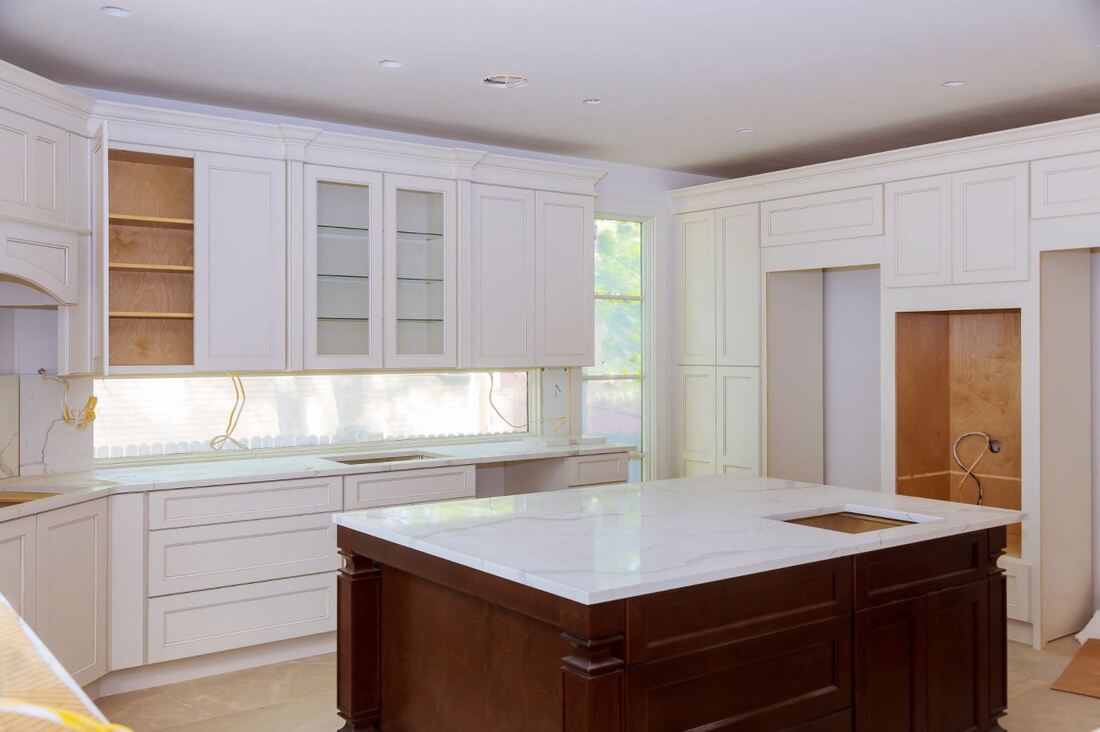
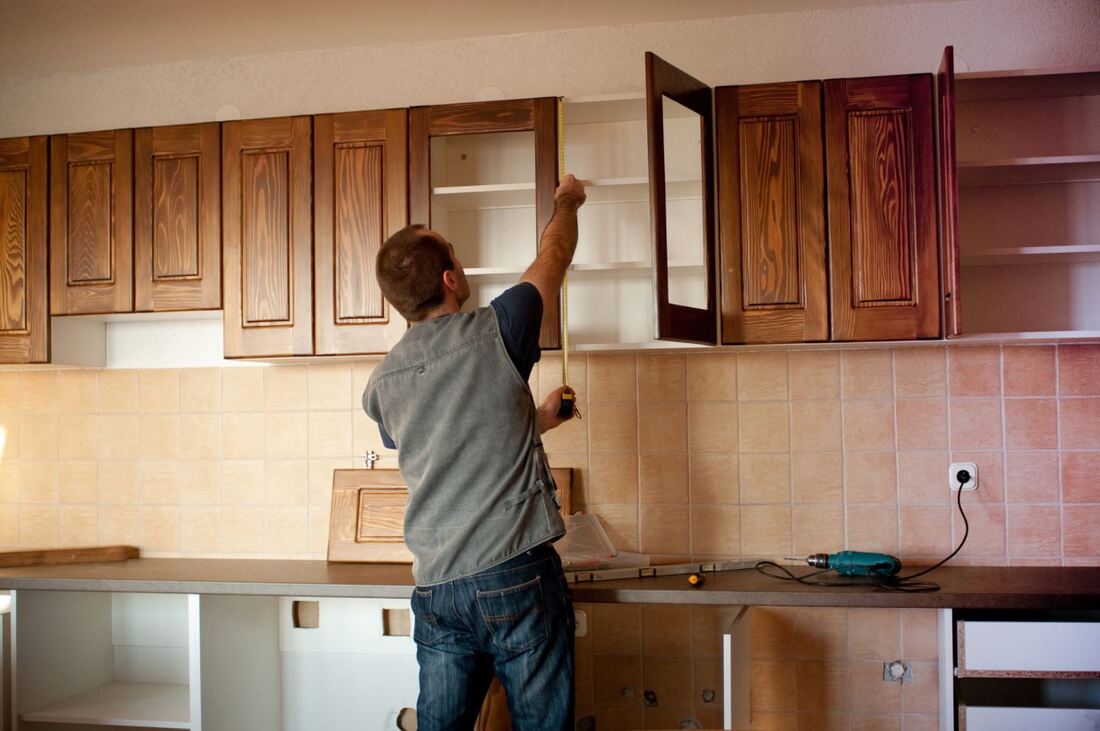
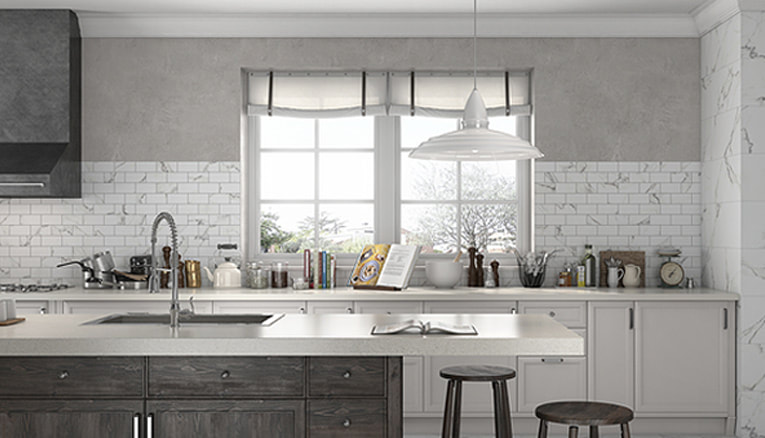
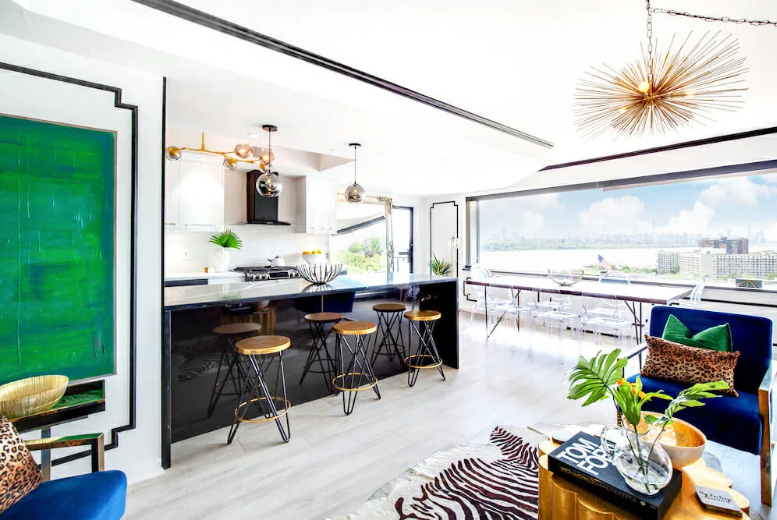
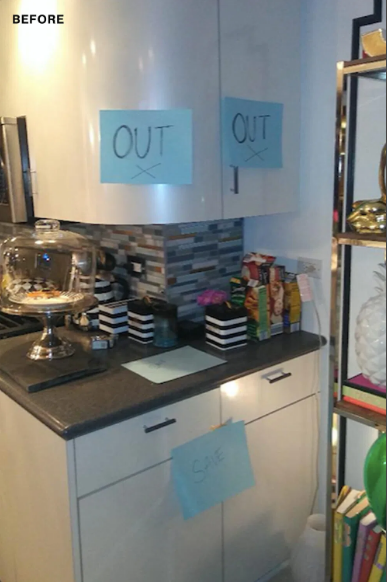
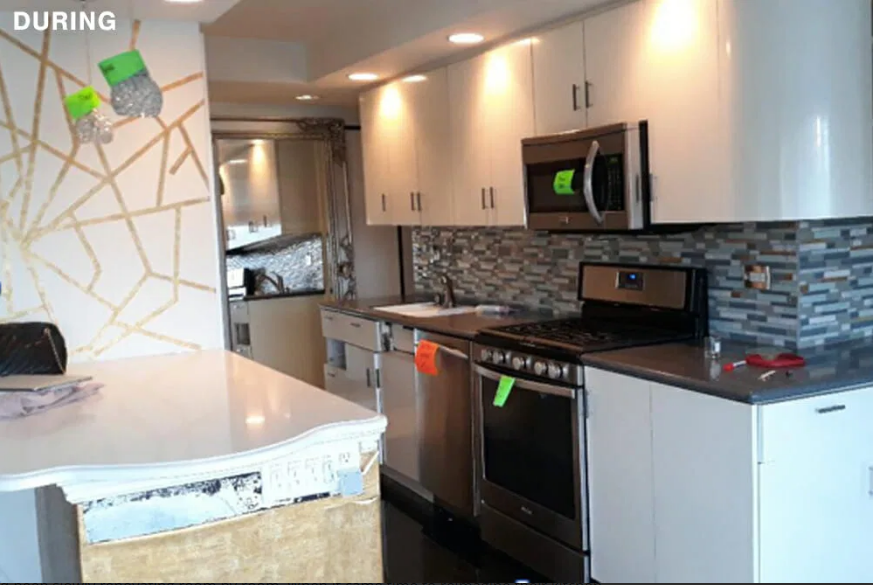
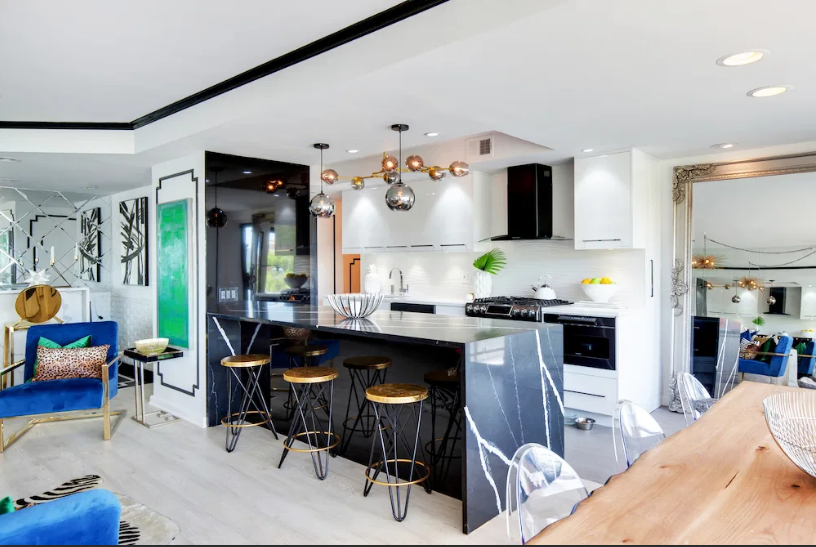
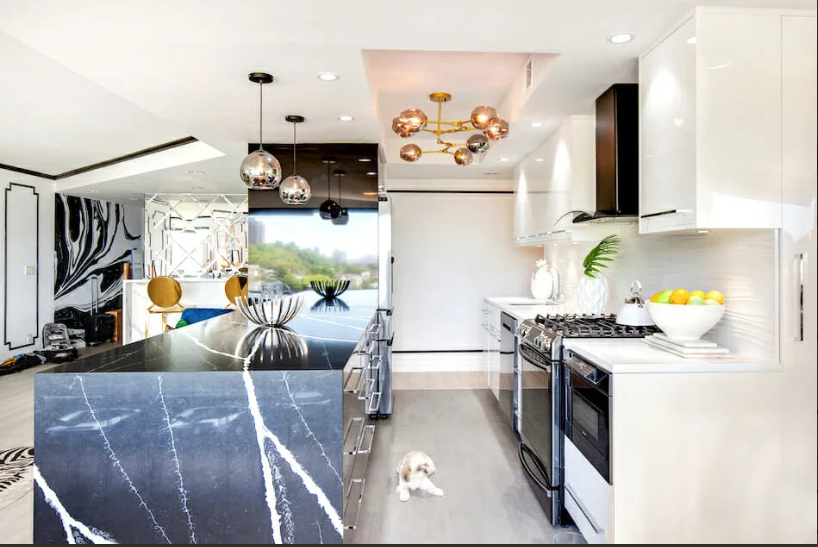
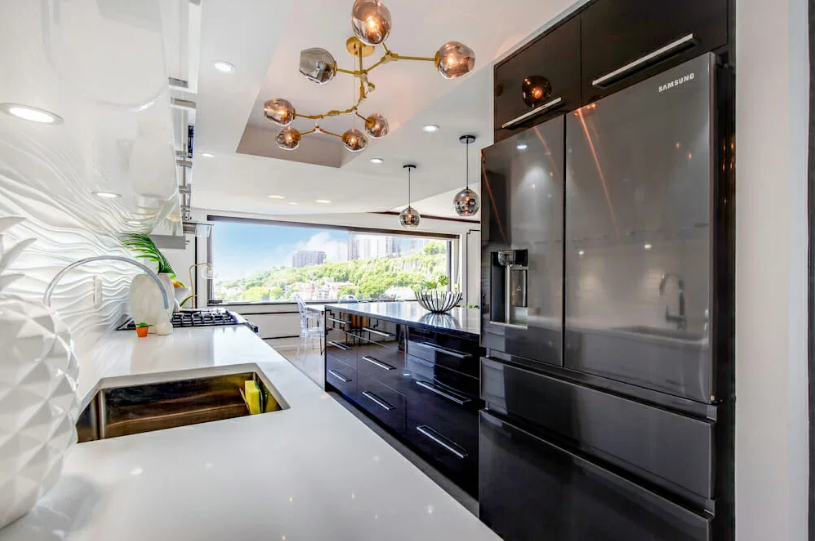
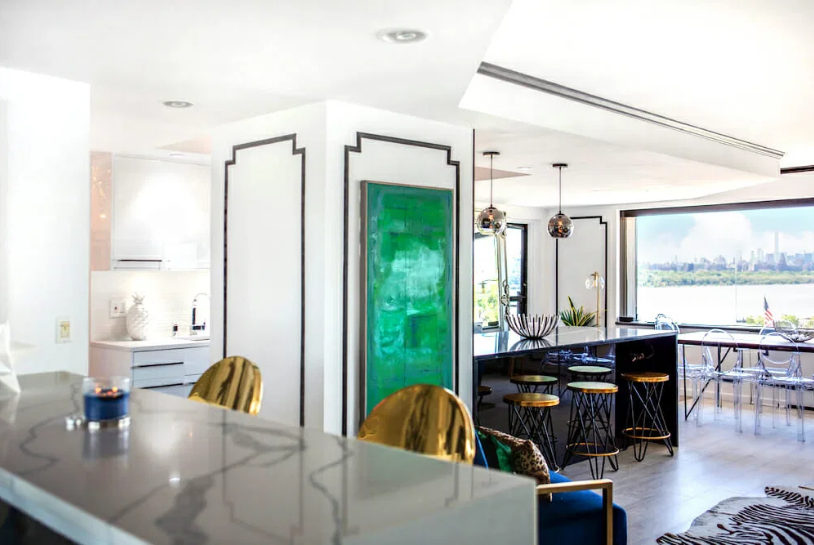
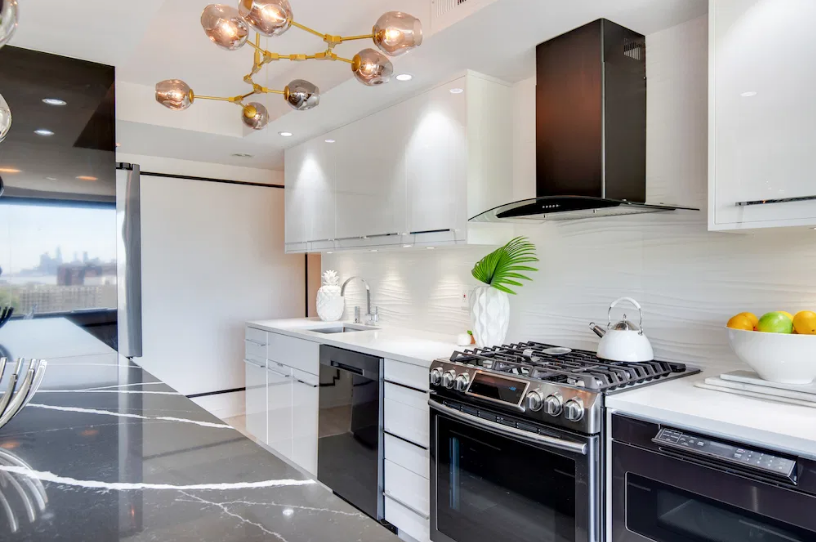
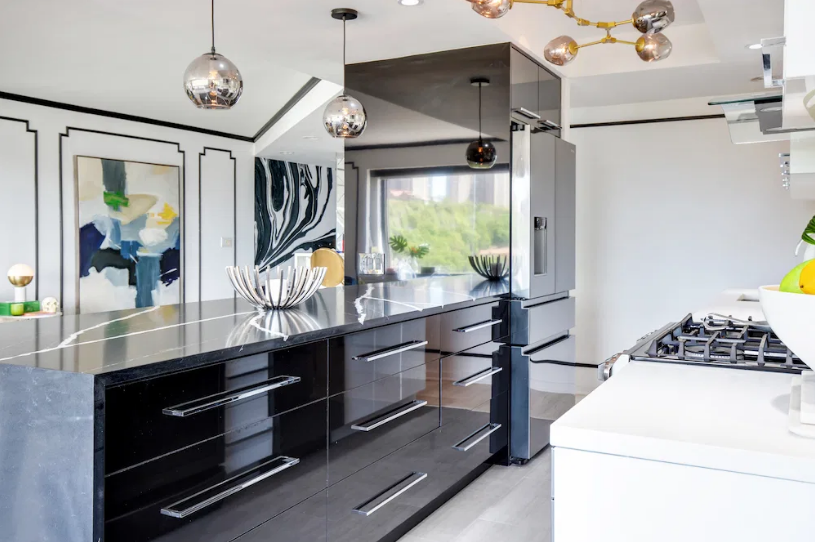
 RSS Feed
RSS Feed
